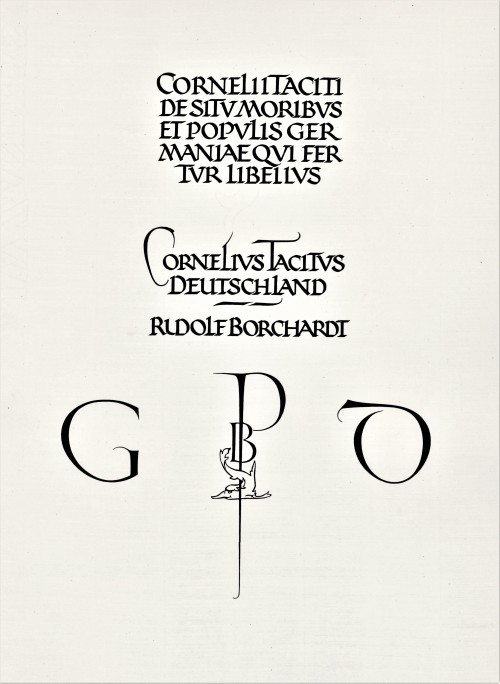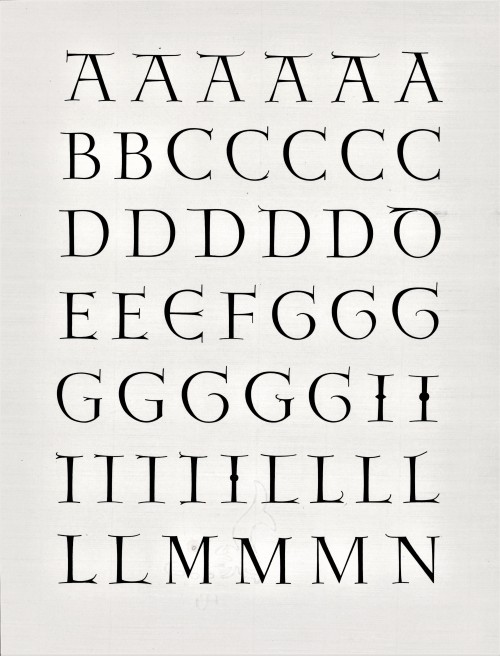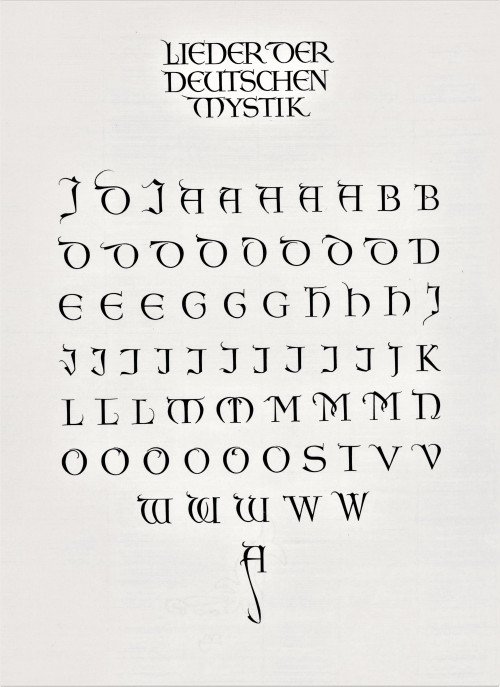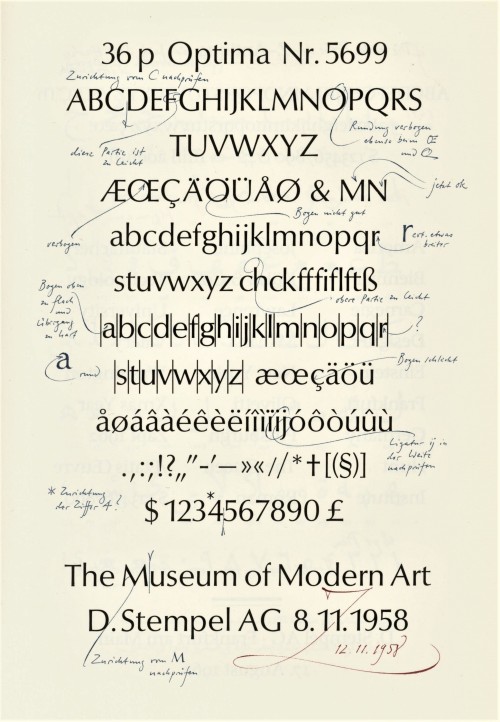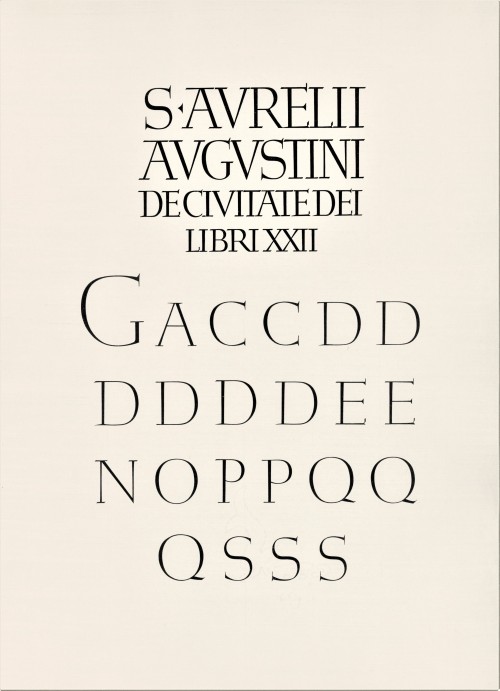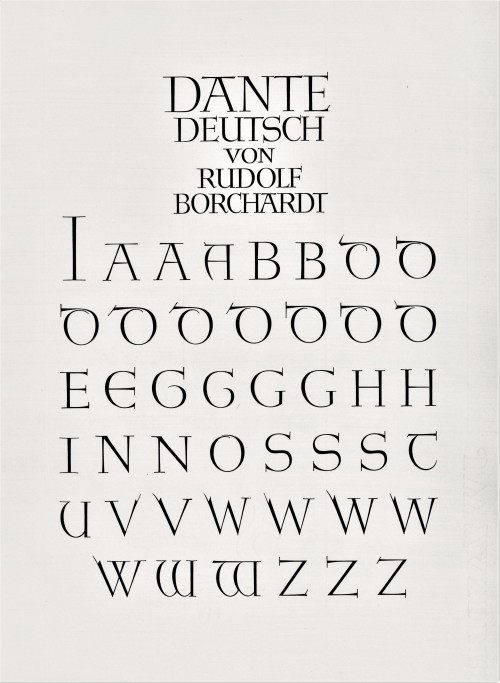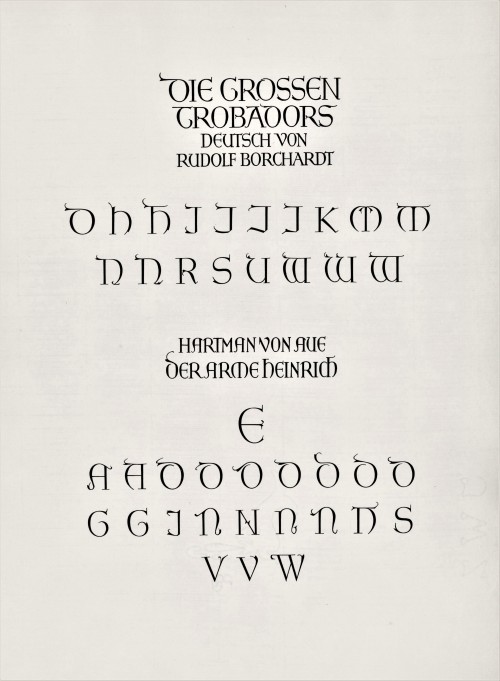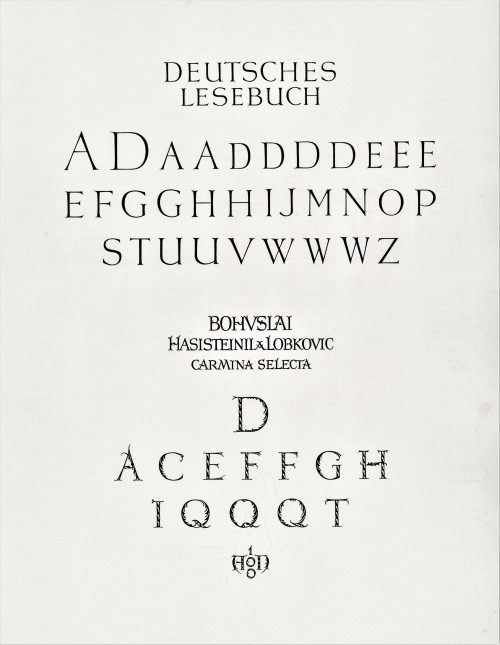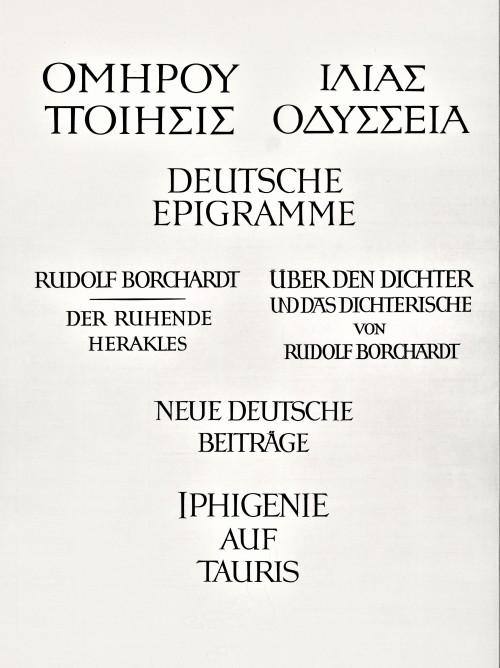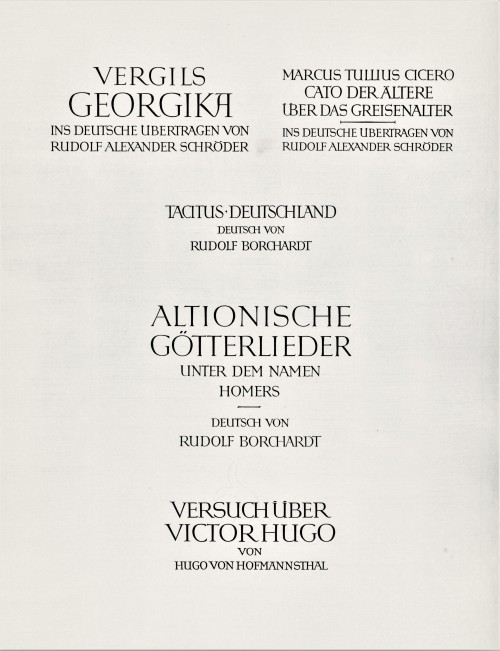#type designers
Typography Tuesday
ANNA SIMONS
Today we present a few pages from a new acquisition, Titel und Initialen für die Bremer Presse, a specimen book of the titling and initials produced by the German calligrapher and type designer Anna Simons (1871–1951) for Willy Wiegand’sBremer Presse, printed letterpress in Munich at the Bremer Presse in an edition of 220 copies in 1926. A student of the renowned British calligrapher and type designer Edward Johnston, Simons taught Johnstonian design concepts at the Kunstgewerbeschule in Dusseldorf and later at Munich under the direction of German architect and type designer Peter Behrens. She began doing design work for the Bremer Presse beginning in 1918, and along with her assistant Franziska Kobell, Simons designed some 1400 titles and initials for the Presse. Simons continued to teach and work in Germany through the Nazi regime and died at 80 in Prien, Germany.
View more posts with designs by Anna Simons.
View posts on other Women Type Designers.
Viewmore Typography Tuesday posts.
Post link
Typography Tuesday
This week we present a selection of designs by our favorite type designer and calligrapherHermann Zapf (1918-2015) from the 1987 publication Hermann Zapf and His Design Philosophy published in Chicago by the Society of Typographic Arts (STA) in memory of the great Scottish-American type designer and long-time design director for the Ludlow Typograph Company Robert Hunter Middleton (1898-1985), who provided the original idea for the book. Since 1948, Hermann Zapf designed over 175 alphabets for hand-composition, for the Linotype typesetting machine, and for photocomposition and digital laser systems. The book brings together selected articles and lectures on calligraphy and contemporary developments in type design by Zapf, with illustrations, some presented for the first time, bibliographical notes and a complete list of Zapf’s typefaces.
Although Zapf spent the majority of his career in Germany, he was an honorary member of STA and was a professor of typographic computer programming, the first such position of its kind in the world, at Rochester Institute of Technology (RIT) from 1977-1987. Click on the images for details on the designs.
View more posts that include the work of Hermann Zapf.
Viewmore Typography Tuesday posts.
Post link
Typography Tuesday
ANNA SIMONS, PART 2
This week we present the next ten of the twenty numbered plates in Titel und Initialen für die Bremer Presse, a specimen book of the titling and initials by the German calligrapher and type designer Anna Simons (1871–1951) for Willy Wiegand’sBremer Presse, printed letterpress in Munich at the Bremer Presse in an edition of 220 copies in 1926. We highlighted the first ten plates a couple of weeks ago.
For 15 years, Simons’s Arts & Crafts-inspired designs were important elements in the aesthetics of the Bremer Presse, and Weigand celebrated her contributions in this portfolio set of specimens during the middle of their collaboration. The press closed in 1934 and its assets were liquidated the following year. The studio building was destroyed in bombings during WWII. Simons, however, continued to teach and work in Germany through the war before her death in 1951.
View more posts with designs by Anna Simons.
View posts on other Women Type Designers.
View more Typography Tuesday posts.
Post link

